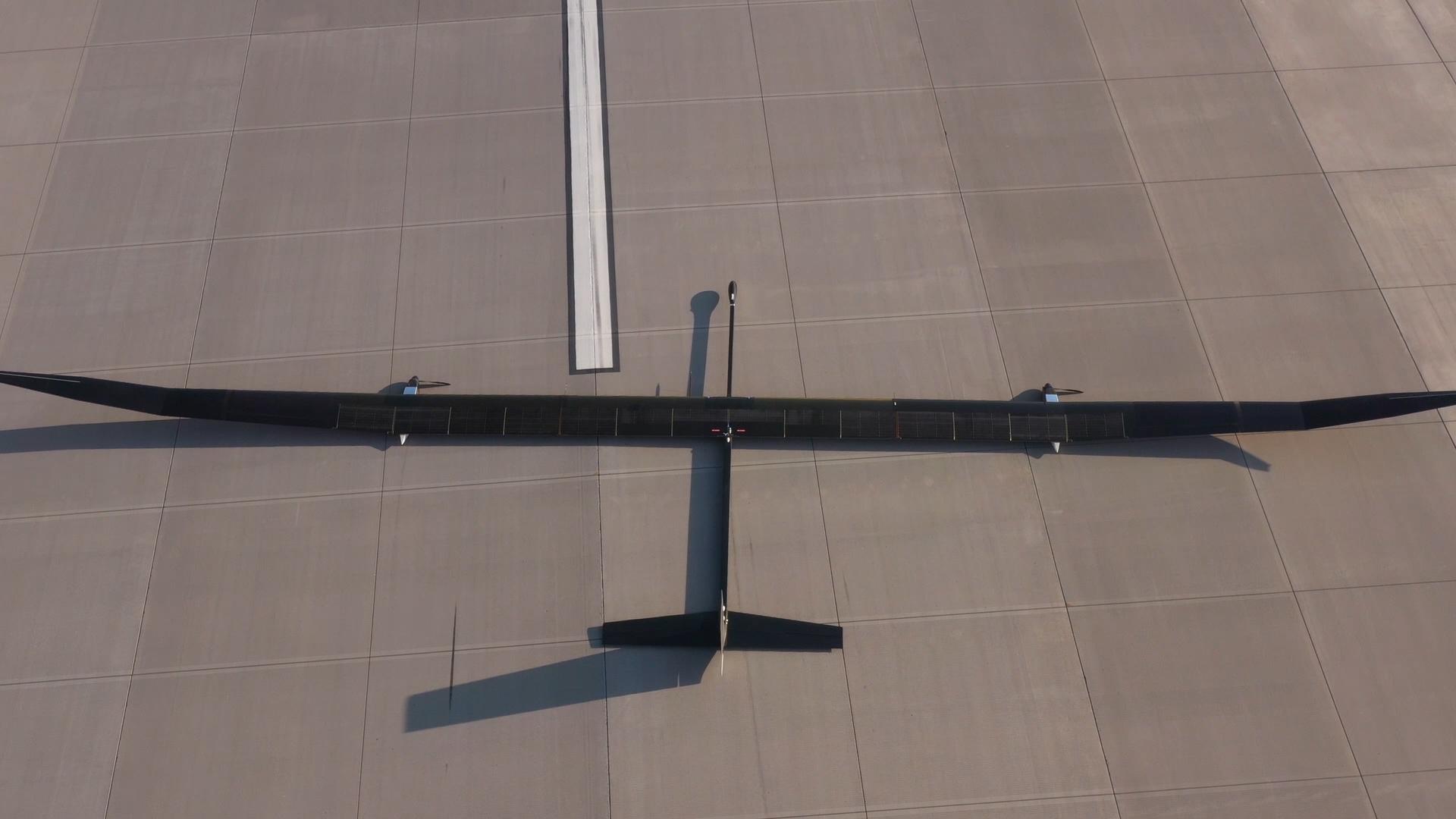
RAF FAIRFORD, England—BAE Systems’ Phasa-35 solar-powered uncrewed aircraft system (UAS) has flown to the stratosphere for the first time.
The 24-hr. flight took place in late June from Spaceport America and over the White Sands Missile Range, New Mexico. It saw the high-altitude pseudo-satellite (HAPS) reach an altitude of more than 66,000 ft., the defense company announced July 14 here at the Royal International Air Tattoo (RIAT).
The short stratospheric flight allowed engineers to assess the system’s performance at high altitudes. It marked the first in a series of trials planned to confirm Phasa-35’s system performance and to validate test points.
BAE Systems now joins a short list of companies to have successfully flown in the stratosphere with a solar-powered aircraft.
The Phasa-35—which was developed by BAE Systems’ Farnborough-based subsidiary Prismatic—completed its first flight in February 2020 at Woomera, Australia, and also completed cold soaks in a simulated environment to prove its mettle before the flight.
Like Airbus’ Zephyr, the Phasa-35 uses solar cells that cover the surface of the wing and the horizontal stabilizer to provide power to the electric motors and onboard systems and sensors. The cells also regenerate the lithium-ion battery cells to provide power at night.
“The aircraft performs exactly as we expected, and in many areas exceeded expectations,” Phil Varty, BAE Systems business manager for UAS, told journalists on the first day of the RIAT.
Named after its 35-m (115-ft.) wingspan, the Phasa-35 weighs in at 150 kg (330 lb.) and can carry a payload of 15 kg. With the rate of improvement in battery technology and motor efficiency, Phasa-35 potentially could stay airborne for up to a year. But Varty said it will be an incremental approach to increasing the endurance of the flights.
BAE Systems sees defense as being the primary customer for the systems for missions such as communications relay and surveillance. With civil certification, Phasa-35 also could provide 4G and 5G cellular connectivity to the ground as well as support disaster relief missions and border protection tasks. The first flight trial was sponsored by the U.S. Army’s Space and Missile Defense Command Technical Center. The next flight is due to be supported by the UK Defense Ministry and carry a payload.
“Phasa-35’s first stratospheric flight demonstrates that this vehicle is on track to become the go-to system for long endurance, high altitude and communications applications in the future,” Prismatic CEO Dave Corfield said.
The Phasa-35 program sits within BAE Systems’ newly established FalconWorks business for advanced and agile research and development within BAE Systems’ air sector. BAE Systems purchased Prismatic in September 2019, one of a number of acquisitions made as part of the UK defense contractor’s strategy to develop breakthrough technologies.
